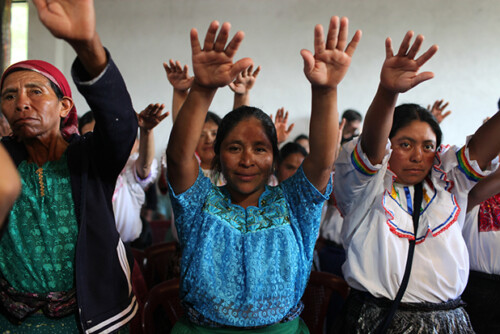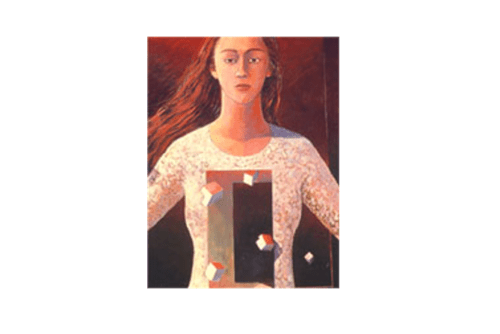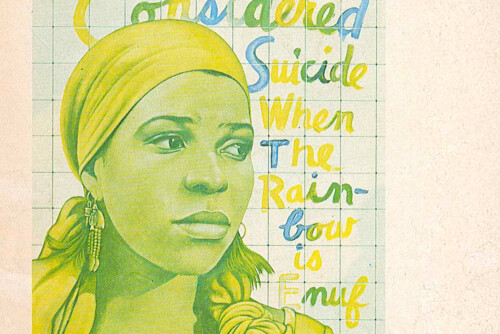From Nutrition to Metabolism, From Generation to Reproduction
History, however, provides evidence that it has not always been so in scientific thought. Revisiting the origins of the terms reproduction and metabolism provides some insight into the twentieth century divergence of these terms. George-Louis Leclerc, Comte de Buffon, French eighteenth-century naturalist and author of the authoritative 26-volume Natural History, General and Particular, has been noted by historians for his highly self-conscious and intentional mobilization of the word “reproduction” to describe the way living beings were able to propagate more of their kinds; the word was borrowed from theology, “in which it referred to the resurrection of the dead on doomsday. In this context, reproduction literally meant the re-creation of bodies that had fallen apart into their components.”24 The choice, Ludmilla Jordanova writes, was highly political; Buffon’s contemporary John Wesley complained that, “[Buffon] substitutes for the plain word Generation, a quaint word of his own, Reproduction, in order to level man not only with beasts that perish, but with nettles or onions.”25
In Buffon’s view, all living beings were composed of minute living organic particles. Food (which of course was composed of other living beings), was first ground up in the stomach, and much of it discarded as waste. The purified chyle moved through the body into the blood, and in the course of its circulation, Buffon thought, different parts of the body would attract “those particles which are most analogous to it, and allow the rest to move on. In this manner all the parts are nourished and unfolded.” Once all the different parts of the body had attained their full growth, they would lose their faculty of attracting and retaining organic particles presented to them by the blood, and the extra would then settle in the testicles and the ovaries: “But, as the particles continue to be carried round in the course of their circulation, and are no longer absorbed in such quantities as formerly, they must, of necessity, be deposited in some particular reservoir, such as the testicles and the seminal vesicles.”26 When this fluid from the male was mixed with similarly derived fluid from the female, “the particles which are most analogous to each other, being actuated by a penetrating force, unite and form a small organized body.” All that remained was for the “expansion of parts, an operation which is performed in the womb of the mother.”27
The proof of this reasoning was manifold. First, infants do not reproduce—humans and animals alike seem disinclined and unable to reproduce until they are nearly or fully grown. Second, eunuchs and castrated animals “grow fatter than those who retain all their parts. The superabundance of nutriment, having no organs for its evacuation, changes the habit of their bodies. The knees and haunches of eunuchs grow uncommonly large.”28 Further, young people who masturbate too much “immediately cease to grow, lose flesh, and fall into consumptions.”29 In this manner, Buffon concluded, one could reason that nourishment, growth, and propagation were all effects of “the same cause.” The borrowing of the term reproduction from theological notions of resurrection makes more sense when one realizes the unity of the logic of the organic particle—living, eating, reproducing, and dying were in Buffon’s schema an ongoing series of compositions and decompositions and recompositions of organic particles, whether one was a human or an onion.
Thus we can say with some certainty that at the point of its introduction into natural philosophy, the term reproduction was quite entirely comingled with notions and observations of nutrition and assimilation. Historian and philosopher of science Hans-Jörg Rheinberger suggests that many nineteenth-century scientists struggled with the legacy of Buffon, particularly his theoretical recourse to a penetrating and actuating force that animated all the living organic particles. This struggle with the idea of an animating organic force came to a head in an age of scientific materialism and the reach for “the analytical mechanics of all life processes,” in which forces could only be understood as physical measures of movement, and not “hypostasized as autonomous real entities.”30 Nutrition is an older term. It appeared first in French, from the Latin nutritionem, “a nourishing” from the stem nutrire—to nourish, suckle, feed. Metabolism, by contrast, did not become widely established in physiology and cell biology until the latter part of the nineteenth century.31
Metabolism, the noun, seems to have arrived somewhat after the adjective metabolic, arriving as a thing only in the wake of a process. The first systematic and self-conscious use of the term to refer to physiology is found in Theodor Schwann’s writings on his microscopical research, to describe those phenomena, “which result from chemical change either in […] the cell itself, or in the surrounding cytoblastema.” These, he wrote, “may be called metabolic phenomena (τò μεταβολικòγ, implying that which is liable to occasion or suffer change).”32 Schwann’s naming of the Greek roots for the word within this sentence, the first use of the term in the book, suggests a self-conscious act of coining a term, rather than the employment of one lying around handy. Ohad Parnes tells us that central to the reception of cell theory after the publication of Mikroskopische Untersuchungen in 1839 was Schwann’s insistence on physiology without mind: “life is conceived of as being composed of a series of specific material processes,” where the “agents of those processes are cells.”33 Even at this very etymological departure point for the metabolic process, Schwann distinguished it from the other general phenomena he saw “attending the formation of cells”: the plastic. For Schwann, the metabolic denoted the power to change the character of substances brought into contact with cells, and the plastic referred to the combination of molecules to form a cell in the first place. Both were material processes done in and by cells, but generation was divided from sustenance of the existing form, from the outset.34
Schwann’s metabolism, thus, was one analyzable life process, just as the quality or question of heredity was beginning to consolidate as a distinct area of inquiry into biological matter. The sentiment articulated by August Weismann at the end of the nineteenth century in The Germ Plasm: A Theory of Heredity, is that although inheritance and metabolism usually come together in the life forms around us, it is possible to conceive of living matter that possesses the primary vital forces of assimilation and metabolism but does not yet possess “historical,” that is, inherited qualities. “The historical qualities of the protoplasm, its special hereditary tendencies, are not connected with these primary vital forces.”35 Metabolism and heredity are thus produced in the historical milieu of European negotations around scientific materialism and vitalism and the rise of the biological, cytological, embryological, and physiological research enterprises as a pursuit of the physical basis of life.
The growth and differentiation of the life sciences themselves plays a central role in this gradual but certain partitioning of the metabolic and the reproductive. The linear notions of historical constancy, of heredity inhering in biological substance, consolidate in the establishment of eugenics, genetics, and the concepts of the gene and genotype at the turn of the twentieth century, just as the chemical analyses of matter and energy transformation formed the kernel of a new discipline of biochemistry centered on catalyzed enzymes performing metabolic reactions. Metabolism, as numerous historians have commented, nucleated the new discipline of biochemistry, and was seen as concomitant with the quest to understand, down to the last chemical reaction, how food was completely broken down into component molecules that then were used to build up the body, as well as the interconversions of energy in photosynthesis and cellular respiration.36 Metabolism was the logic of conversion of the world into the somatic self during the lifespan; reproduction, via genetics and molecular biology, was the logic of replication of the germ-line self over countless lifespans.
Indeed, these different strands of research activity have been extremely productive and culturally authoritative in their own ways, leading to everything from maps of the human genome to efficacious therapies for most diseases of nutritional deficiency—and to theories of the dual origin of life. It has come to appear as though these divisions in knowledge are naturally given in the biological matter that these disciplines study. And it is the entrenchment of these distinctions—historically, philosophically, culturally, medically, and scientifically—that lays the ground for evidence of their profound intercalation to come as an unsettling discovery.
- Müller-Wille and Rheinberger 2012: 15. [↩]
- Quoted in Ludmilla Jordanova, “Interrogating the Concept of Reproduction in the Eighteenth Century,” eds. Faye Ginsburg and Rayna Rapp, Conceiving the New World Order: Global Politics of Reproduction (Berkeley: U of California P, 1995): 369-386. [↩]
- Georges Louis Leclerc, comte de Buffon, Natural History, General and Particular, 3rd edition, vol.2, trans. William Smellie (London: Printed for A. Strahan and T. Cadell in the Strand, 1791): 55. [↩]
- Leclerc 1791: 56. [↩]
- Leclerc 1791: 58. [↩]
- Leclerc 1791: 60-61. [↩]
- Hans-Jörg Rheinberger, “Invisible architectures,” Science in Context 13.1 (2000): 121-136, 131. [↩]
- Franklin C. Bing, “The history of the word ‘metabolism,’” Journal of the History of Medicine and Allied Sciences 26.2 (1971): 158-180. [↩]
- Theodor Schwann, Microscopical Researches Into the Accordance in the Structure and Growth of Animals and Plants, trans. Henry Smith (London: Sydenham Society, 1847): 193. [↩]
- Ohad Parnes, “From agents to cells: Theodor Schwann’s research notes of the years 1835–1838,” eds. Frederic L. Holmes, Hans-Jörg Rheinberger, and Jürgen Renn, Reworking the Bench: Research Notebooks in the History of Science (Dordrecht: Kluwer Academic, 2003): 119-140, 134. [↩]
- Staffan Müller-Wille, “Cell theory, specificity, and reproduction, 1837–1870,” Studies in History and Philosophy of Science Part C: Studies in History and Philosophy of Biological and Biomedical Sciences 41.3 (2010): 225-231. [↩]
- August Weismann, The Germ-Plasm: A Theory of Heredity, trans. W. Newton Parker and Harriet Rönnfeldt (New York: Charles Scribner’s Sons, 1893): 39. [↩]
- Frederic Lawrence Holmes, Between Biology and Medicine: The Formation of Intermediary Metabolism (Berkeley Papers in History of Science 14, U of California, 1992). Erwin Ackernecht, “Metabolism from Liebig to the present,” Ciba Symposia 6 (1944): 1825-1833. Robert Kohler, From Medical Chemistry to Biochemistry: The Making of a Biomedical Discipline (Cambridge: Cambridge UP, 1982). [↩]





